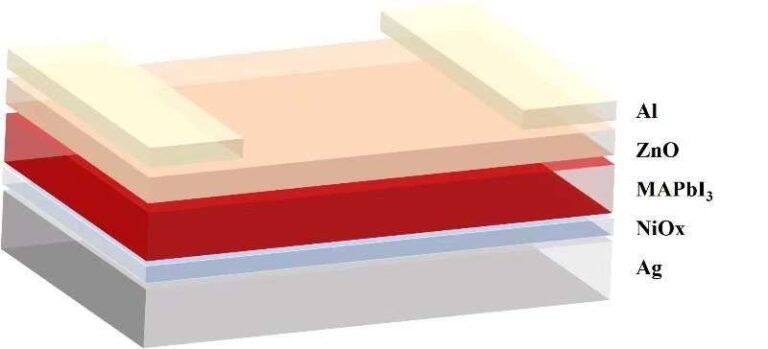Scientists in China have devised a perovskite solar cell that uses a silver-based rear mirror to improve light output. The device can reportedly achieve an energy conversion efficiency of more than 27%.
Scientists from the University of the Chinese Academy of Sciences have designed an ultra-thin perovskite solar cell that uses a Gires-Tournois resonator to improve light absorption.
Gires-Tournois resonators are optical standing wave resonators designed for generating chromatic dispersion. They are usually based on a reflective metal mirror and are mainly used in chirping applications such as pulse compression. “Our Gires Tournois resonator structure uses a simple optical structure combined with a silver rear mirror,” said Ning Dai, the lead author of the study. pv magazine. “It optimizes the collection and use of light and at the same time improves the light absorption capacity.”
The researchers said they tried to “meticulously” design the thickness of each layer in the solar cell and, after a series of simulations, chose silver for the reflective metal mirror.
They designed the cell with a 10 nm electron transport layer (ETL) based on zinc oxide (ZnO), a 45 nm perovskite absorber, a 5 nm hole transport layer (HTL) made of nickel(II) oxide (NiOx) and a 60 nm silver rear mirror. “The effectiveness of the proposed theoretical framework was verified through optical simulation and SCAPS software analysis, which provided a basis for experimental research on ultrathin perovskite solar cells,” Dai said.
The proposed cell configuration could achieve an average absorption capacity of approximately 85%, according to the research group. This would be mainly due to an increase in light absorption in the wavelength range 400-800 nm, which would result in a “significant” improvement in incident photon current efficiency (IPCE), attributable to “pronounced” light-matter interference effects between the perovskite absorber and the metal mirror.
“Electrical simulations indicate that the ultra-thin MAPbI3 perovskite solar cell has a photoelectric conversion efficiency of approximately 26%, higher than that of its conventional counterparts,” the academics explained. “Under ideal conditions, the conversion efficiency of ultra-thin perovskite solar cells can even reach around 27%.”
They added that these types of ultra-thin perovskite cells require the use of vacuum deposition techniques to achieve the desired efficiency levels in commercial production. “It is worth noting that using a very thin perovskite absorption layer reduces material costs and significantly reduces lead content in the device,” they concluded.
The new solar cell concept was introduced in the research “Ultra-thin perovskite solar cell based on Gires-Tournois resonator configuration with a theoretical efficiency of 27%”, published in Solar energy.
This content is copyrighted and may not be reused. If you would like to collaborate with us and reuse some of our content, please contact: editors@pv-magazine.com.


